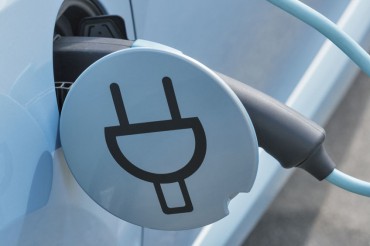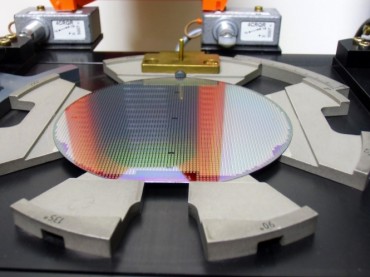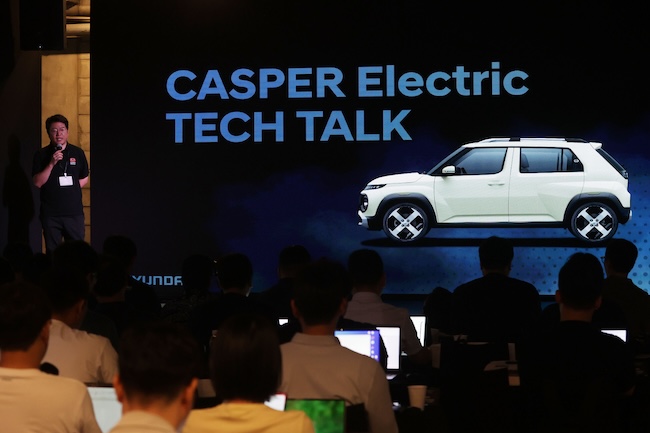
Hyundai Motor holds a media tech talk session for the company’s upcoming Casper Electric subcompact EV in southern Seoul on Aug. 6, 2024. (Image courtesy of Yonhap)
SEOUL, Aug. 21 (Korea Bizwire) – Automotive companies in South Korea are pushing forward with their new electric vehicle launch schedules despite public concerns over EV safety, with key players actively campaigning to debunk unsubstantiated myths surrounding safe charging practices.
The latest fears surrounding EVs began after a spontaneous fire that began in a parked Mercedes-Benz EV wiped out an entire underground parking garage inside an apartment complex in Incheon, 27 kilometers west of Seoul, while damaging over 100 cars.
Since then, many pundits have pointed out that fully or overcharged EVs could pose fire risks, while authorities have scrambled to present safety measures against such accidents. The Seoul city government announced a plan to discourage the entry of EVs that are more than 90 percent charged into apartment underground parking garages.
Various local governments across the country also have announced or were considering similar measures, including moving underground EV charging facilities to above-ground locations.
After having remained mostly reactive in their responses to such safety fears, car manufacturers are now coming out to actively promote the safety of EVs as they seek to resuscitate the automotive segment that has seen a recent slowdown in demand globally amid the so-called adoption chasm.
Industry heavyweights Hyundai Motor Co. and Kia Corp., in particular, are seeking a breakthrough in the global EV demand lull with their new affordable yet advanced models, the Casper Electric subcompact model and the EV3 crossover model, respectively.
The two companies said in a press release Tuesday that their EV batteries are designed to be safe even when charged to 100 percent, with the internal battery management system monitoring and controlling any issues that may arise.
They explained that the battery’s charging capacity is calculated within a safety-verified range — meaning that even when the battery is full, there is still additional capacity that remains unutilized.
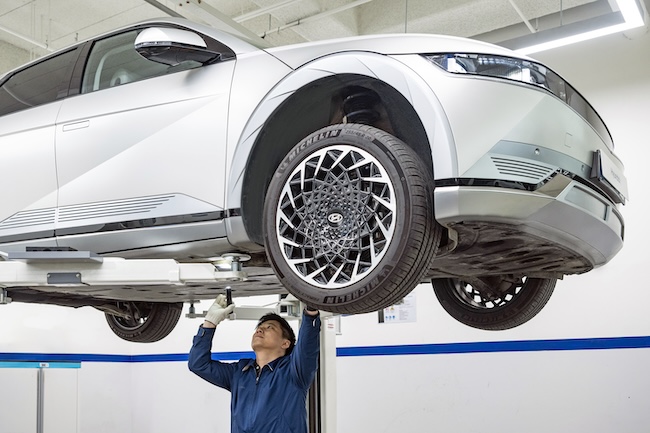
This undated photo provided by Hyundai Motor shows an employee inspecting the battery system for the company’s Ioniq 5 EV model. (Image courtesy of Yonhap)
Hyundai and Kia pointed out that in the case of ternary NCM (nickel-cobalt-manganese) batteries, while they can technically hold up to 275 mAh of energy per gram, battery manufacturers design them to use only 200 to 210 mAh per gram.
The automakers said car manufacturers, too, also set the 100 percent charge level while leaving some capacity unused when designing and producing cars.
They emphasized that the charging level displayed to consumers on car dashboard screens reflects the available capacity minus the margins set by both the battery cell and vehicle manufacturers — meaning that a 100 percent charge does not actually indicate that the battery has been charged to its absolute maximum capacity.
The imported car companies are also actively addressing battery safety concerns as they prepare to launch new models.
Polestar Automotive Holdings, for instance, highlighted the safety of its Chinese CATL NCM batteries during the South Korean launch event for the Polestar 4 EV held in Seoul last week.
A company official stressed that out of some 160,000 Polestar 2 units sold across 27 countries in the past, there have been no reported fire incidents.
Porsche Korea is planning to launch the electric Taycan in the second half of this year as scheduled. while Stellantis Korea is also set to release its first electric SUV model under its Jeep brand.
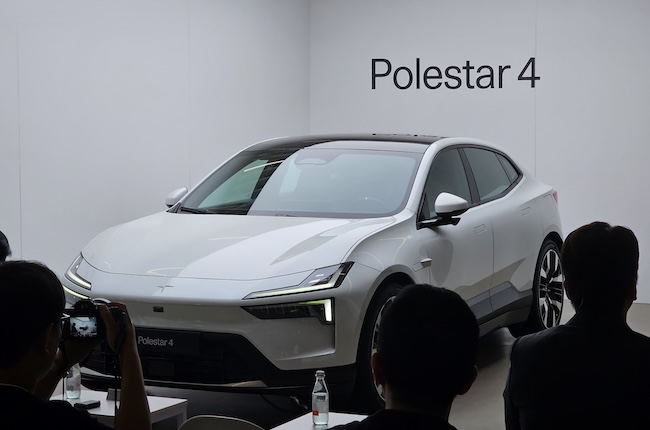
This photo from Aug. 17, 2024, shows a Polestar 4 EV model displayed at a media event for the vehicle’s South Korean launch in Seoul. (Image courtesy of Yonhap)
Additionally, BMW Group Korea, which sells vehicles under three brands — BMW, MINI and Rolls-Royce — in the country is also preparing to introduce the new Mini Countryman Electric later this year.
Central government authorities have also suggested that measures by local governments to arbitrarily restrict entry of EVs into parking facilities based on charging levels should be subject to closer review.
During a session of the National Assembly’s industry committee Monday, First Vice Industry Minister Park Sung-taek said, “While the idea of (the Seoul city government’s) 90 percent charging limit measure may be correct in principle, it would have been better if the measure had been thoroughly verified before being announced.”
The government and the ruling party plan to announce a comprehensive safety plan later this month aimed at preventing EV fire accidents.
Yoon Won-sub, an energy science professor at Seoul’s Sungkyunkwan University and a renowned domestic expert in the field of batteries, expressed concerns over the latest trend of attributing EV battery fires solely to overcharging.
“While there is certainly a relationship between charging levels and fires, it is not the dominant cause,” he said during a recent interview with Yonhap News Agency. “The concept of 100 percent charging is very relative.”
(Yonhap)



